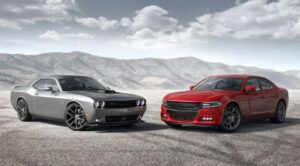When did the Dodge Charger change its body style? This question has piqued the curiosity of many car enthusiasts and those on the hunt for the perfect Charger. Well, fear not, for we have the answer you seek! The Dodge Charger has had several changes in its body style over the years, reflecting the evolution and innovation of this iconic American muscle car. In this article, we will take you on a journey through time, exploring the different generations of the Dodge Charger and when each transformation occurred. So, buckle up and get ready to delve into the fascinating history of the Dodge Charger’s body style changes!
When Did Dodge Charger Change Body Style: A Definitive Guide
Introduction
The Dodge Charger is an iconic American muscle car that has captured the hearts of car enthusiasts for decades. Over the years, the Charger has undergone various changes, including updates to its body style. In this article, we will explore the timeline of when Dodge Charger changed its body style and dive into the details of each iteration. From its inception in the 1960s to the present day, the Dodge Charger has evolved to suit the tastes and demands of performance car enthusiasts. Let’s take a closer look at the different generations of the Dodge Charger and how its body style has transformed over time.
The First Generation (1966-1967)
The first-generation Dodge Charger made its debut in 1966. It had a distinctive fastback design with a long hood and a short rear deck, giving it a sleek and aerodynamic appearance. The Charger featured a wide front grille, hidden headlamps, and a chrome bumper that added to its aggressive yet elegant look. This body style remained unchanged until 1967, making these models highly sought after by collectors and enthusiasts.
The Second Generation (1968-1970)
In 1968, the Dodge Charger underwent a significant redesign. The second-generation Charger featured a more squared-off and muscular look compared to its predecessor. It had a bold front end with a split-grille design, recessed headlamps, and a distinctive center divider that ran through the middle of the grille. The rear end of the Charger also received a makeover with new taillights and an integrated rear spoiler. This iconic body style remained relatively unchanged until 1970.
The Third Generation (1971-1974)
The third-generation Dodge Charger marked a departure from the previous designs. Introduced in 1971, this generation featured a larger and more luxurious body style. The Charger grew in size and had a more streamlined appearance with smoother lines and a more rounded profile. The front end received a new grille design with a divided center section, while the rear end featured rectangular taillights. Despite the change in aesthetics, the third-generation Charger still retained its powerful performance capabilities.
The Fourth Generation (1975-1978)
In 1975, Dodge introduced the fourth-generation Charger. This generation featured a completely new design that deviated from the Charger’s traditional muscle car roots. The body style was more squared-off and had a boxy look, reflecting the design trends of the time. The front end featured a wide grille with rectangular headlights, while the rear end had large rectangular taillights. Although the fourth-generation Charger didn’t evoke the same level of excitement as its predecessors, it offered a comfortable and spacious interior.
The Fifth Generation (1982-1987)
After a brief hiatus, the Dodge Charger returned in 1982 with the fifth-generation model. This generation featured a compact body style that was more reminiscent of a sedan than a traditional muscle car. The Charger had a sleeker and more rounded profile, with a sloping hood and a slanted rear end. It featured a front grille with hidden headlights and a streamlined appearance. The fifth-generation Charger catered to those seeking a more fuel-efficient and practical vehicle.
The Sixth Generation (2006-2010)
After nearly two decades, the Dodge Charger made a comeback in 2006 with a bold and aggressive design. The sixth-generation Charger brought back the muscular and imposing look that fans had been craving. It had a wide and chiseled front grille, high-intensity discharge headlights, and a sculpted hood. The rear end featured a modernized version of the iconic Charger taillights. The sixth-generation Charger combined retro-inspired styling with modern features, making it a hit among car enthusiasts.
The Seventh Generation (2011-present)
The current generation of the Dodge Charger made its debut in 2011 and continues to be produced to this day. This generation features a more refined and sophisticated body style compared to its predecessors. The front end received a revised grille design with LED headlights, giving it a more modern and aggressive look. The rear end also underwent minor updates, including redesigned taillights. The seventh-generation Charger offers a perfect blend of classic muscle car aesthetics and contemporary design elements.
Throughout its history, the Dodge Charger has undergone several changes in body style to adapt to the ever-changing automotive landscape. From its sleek fastback design in the 1960s to the more refined and powerful appearance of the current generation, the Charger has continued to captivate car enthusiasts with its iconic looks and impressive performance. Whether you prefer the classic and muscular lines of the second-generation Charger or the modern and aggressive styling of the seventh-generation model, there is no denying the enduring appeal of this legendary American muscle car.
Dodge Charger Hellcat Terrorizing My Boy
Frequently Asked Questions
When did the Dodge Charger change body style?
The Dodge Charger has undergone several changes in its body style over the years. Here are some key milestones:
What body style was the Dodge Charger before the change?
Prior to the change, the Dodge Charger featured a sleek and muscular design, characterized by its bold front grille and aggressive stance.
When did the Dodge Charger receive its first major body style change?
The Dodge Charger received its first major body style change in 1971. This update included a wider and longer body, a new front grille design, and distinctive rear fender scallops.
Has the Dodge Charger changed in body style recently?
Yes, the Dodge Charger underwent a significant body style change in 2011. This update introduced a more modern look with redesigned front and rear fascias, a sleeker profile, and enhanced aerodynamics.
Did the Dodge Charger change body style again after 2011?
Yes, the Dodge Charger received another body style change in 2015. This update featured a restyled front grille, revised headlights, and a more sculpted body, giving the Charger a more aggressive and contemporary appearance.
Are there any upcoming changes planned for the Dodge Charger’s body style?
As of now, there are no official announcements regarding future body style changes for the Dodge Charger. However, Dodge continues to innovate and update their lineup, so it’s worth keeping an eye out for any potential updates in the future.
Final Thoughts
The Dodge Charger has undergone several body style changes throughout its history. One significant change occurred in 2011 when Dodge introduced a more modern and aggressive design. The new body style featured sleek lines, a larger front grille, and a more aerodynamic shape. This redesign brought a fresh and contemporary look to the Charger, appealing to a wider audience. So, when did Dodge Charger change body style? It was in 2011 when the Dodge Charger underwent a notable transformation, ensuring its place as a visually striking and iconic American muscle car.



